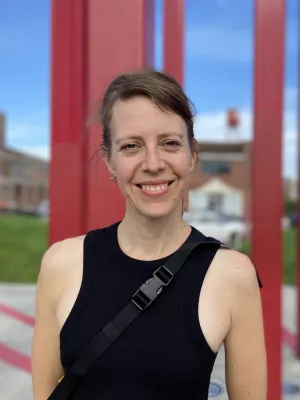
Melissa García
Associate senior lecturer

Land remediation in Gloasgow's East End : A “sustainability fix” for whose benefit?
Author
Editor
- Isabelle Anguelovski
- James J. T. Connolly
Summary, in English
Following an industrial boom from the mid-to-late 19th century, Glasgow’s East End underwent exceptional levels of industrial decline. By the 1960s, it suffered from wholesale abandonment and devaluation, visible through widespread swathes of vacant and derelict land and decrepit building structures. After several unsuccessful regeneration attempts over the decades, in 2007 Glasgow City Council (G.C.C.) won the bid to host the 2014 Commonwealth Games in the East End. In 2008, the same area was subject to the largest regeneration project in Scotland--Clyde Gateway--rooted in sustainability discourses and the provision of new green and blue infrastructure. Clyde Gateway has invested hundreds of millions of public funds across 840 hectares of land, 350 hectares of which was defined as surplus, vacant, derelict, polluted or in need of substantial infrastructural investment. This chapter explores whether substantial benefits from regeneration are in fact trickling down to the local community through the measures being implemented, or whether the “sustainability fix” merely operates to legitimize and accommodate the contradictory impulses of profit-making urbanism and environmentalism. In essence this chapter asks: for whom are the new businesses, jobs, homes and green-blue infrastructure, and at what cost?.
Publishing year
2021-01-01
Language
English
Pages
100-110
Publication/Series
The Green City and Social Injustice : 21 Tales from North America and Europe
Document type
Book chapter
Publisher
Routledge
Topic
- Human Geography
Keywords
- (green) gentrification
- creative class
- employment and economic development needs
- enduring health inequality
- green infrastructure
- green space
- income inequality
- large-scale urban regeneration
- private capture of public investment
- the inequalities at stake: insufficient affordable housing
- the urban development pattern of the city and neighborhood: recovering post-industrial
- the urban greening of the neighborhood: land remediation
- vacant space
Status
Published
ISBN/ISSN/Other
- ISBN: 9781003183273
- ISBN: 9781032024134